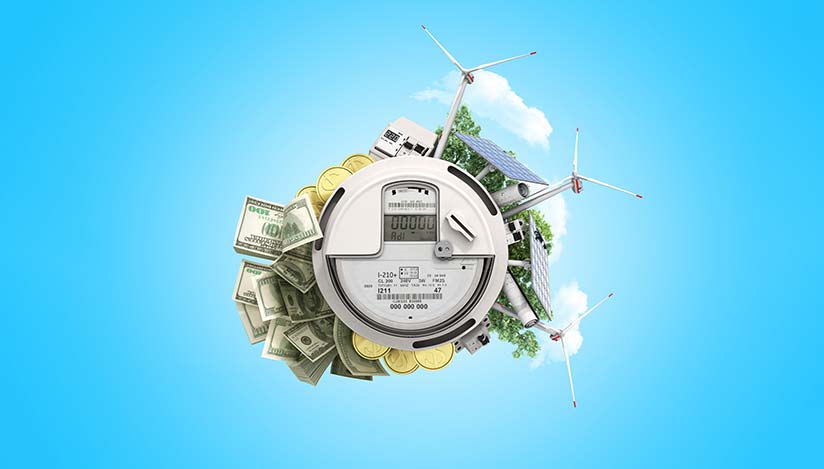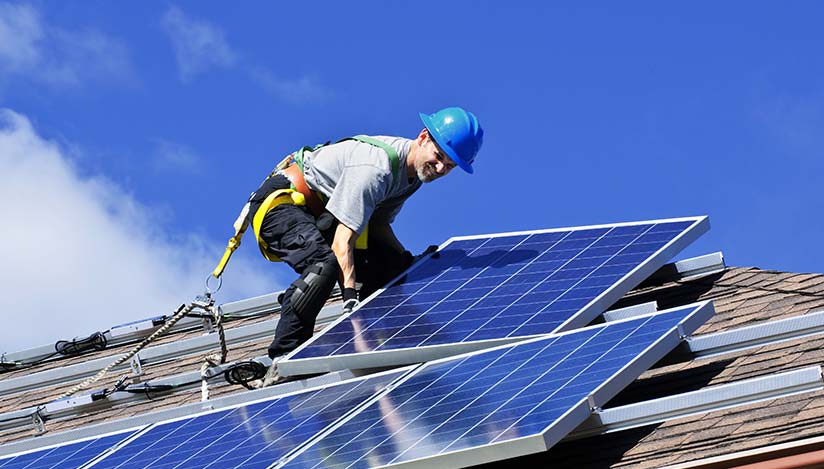A whole-home solar system is a significant investment but has the potential to generate considerable returns. Solar power can allow you to become energy-independent and realize immense savings on utility bills. Like any big investment, you'll want to know exactly how much needs to be put in to assess if the return will be worthwhile. The first question most homeowners ask is, how many solar panels are needed to run a house? There isn't a one-size-fits-all answer, but some general considerations will help give you an idea.
Capital City Solar can comprehensively assess your home's energy needs and determine how many solar panels are necessary. Wondering how much solar power do I need for a whole-home solar system shouldn't intimidate you from converting to solar energy. Call us for a meeting, and we'll get you the information you need to make informed decisions.
Is a Whole-Home Solar System Worth It?
Harnessing the abundance of solar energy in northern California allows homeowners to achieve energy independence and reduce reliance on the grid and traditional fossil fuels. The results are significant cost savings and the satisfaction of ensuring a reliable and sustainable energy source for the home, regardless of external factors or price fluctuations.
- Energy Cost Savings - Significantly reduce or even eliminate monthly electricity bills, generating long-term savings on energy costs.
- Energy Independence - Achieve greater resilience during power outages, mandatory blackouts, and energy price fluctuations.
- Environmental Sustainability - Solar energy is clean and emits no greenhouse gases or harmful pollutants during operation, contributing to a healthier environment and mitigating climate change.
- Low Maintenance - Solar panels require minimal maintenance, typically limited to occasional cleaning, to ensure optimal performance.
- Long-Term Investment - Solar panels have a long lifespan, typically 25 to 30 years or more.
- Reduced Carbon Footprint - Reduce your carbon footprint with clean, renewable energy to combat climate change and positively impact the planet for future generations.
Financial Incentives
Government incentives, such as tax credits, rebates, and net metering programs, can help offset the initial cost of installing a solar system, enhancing its affordability and attractiveness.
California's Net Energy Metering (NEM) program empowers homeowners to earn money by selling surplus energy back to the grid. Excess power generated during sunny periods is fed back into the grid through NEM, effectively spinning the homeowner's electricity meter backward, thus earning credits. This arrangement incentivizes solar adoption and helps homeowners offset the initial investment of installing a whole-home solar system by turning their rooftop into a revenue-generating asset.
Homeowners transitioning to solar energy can benefit from various tax incentives and federal, state, and local rebates. Many local utility companies also provide additional rebates and incentives, making the switch to solar even more financially attractive for homeowners. These combined incentives help reduce the upfront cost of installing solar panels, making renewable energy more accessible and affordable for Californians.
Increased Home Value
Homes equipped with solar panels often command higher resale values and sell faster than comparable non-solar homes. Solar systems are considered desirable features by environmentally conscious buyers seeking energy-efficient properties.
Whole-home solar systems can command premium prices in the real estate market. Factor in the potential ROI of your home's resale value when considering questions such as, how many solar panels do I need? And, how many solar panels are needed to run a house?
How Much Solar Power Do I Need?
Whole-home solar systems are comprehensive solar energy solutions designed to power an entire residence using sunlight. These systems typically consist of photovoltaic panels installed on the roof or in the surrounding property, along with inverters and batteries for energy storage and distribution.
Determining how much solar power do I need to power a home involves several considerations:
- Energy Consumption - Analyzing historical energy consumption data helps estimate the average amount of electricity a household requires over a specific period.
- Location and Climate - Solar irradiance varies depending on geographical location and climate conditions. Areas with more sunlight receive more solar energy, which impacts the size and efficiency of the solar panel system required.
- Roof Size and Orientation - The available roof space and its orientation relative to the sun influence the number and arrangement of solar panels that can be installed.
- Panel Efficiency - The efficiency of solar panels affects how much electricity they can generate from sunlight. High-efficiency panels may require less space but could come at a higher cost.
- Battery Storage - Incorporating battery storage allows for energy storage during daylight hours for later use, reducing reliance on the grid and ensuring power availability during periods of low sunlight or power outages.
Our dedicated technicians are committed to guiding you through every step of the process. We start with a comprehensive site visit to address all your questions and assess your energy needs. During this visit, we'll carefully evaluate your property's layout, orientation, and energy consumption patterns to determine the ideal size and configuration for your whole-home solar system. We can definitively answer your question of how much solar power do I need?
Whether you want to power your entire home or specific appliances and systems, we'll tailor a solution to meet your unique requirements. Moreover, our support extends beyond installation. We're here to assist you throughout the lifetime of your solar system. From routine maintenance to timely repairs and upgrades to accommodate additional power demands as your needs evolve, we're dedicated to ensuring that your solar investment continues to deliver reliable, cost-effective energy for years to come.
Is Solar Power Degradation a Concern?
Solar panel degradation should not deter you from installing a whole-home solar system. Solar panel degradation happens slowly, losing around 10-12% efficiency over a typical lifespan of 30 years. Proper maintenance and cleaning by certified solar panel technicians can mitigate solar panel degradation and make a whole-home solar system a worthwhile investment.
Professional Services to Mitigate Solar Panel Degradation
Capital City Solar offers comprehensive repair and maintenance services designed to prolong the lifespan of solar panels and maximize energy production. Our team of experienced technicians conducts routine cleaning and output verification. We use advanced tools and processes to identify any issues early on and address them promptly.
Professional installation and reliable repairs from our company are essential to ensuring that solar panel degradation does not outweigh homeowners' return on investment. With our expertise, homeowners can rest assured that their solar panels will be installed correctly and maintained to the highest standards.
Schedule a Meeting for a Whole-Home Solar System Assessment
How much solar power do I need? How many solar panels are needed to run a house? These are essential questions to ask when considering installing a whole-home solar system. Capital City Solar can answer all these questions and provide every service necessary to achieve energy independence, from installation to upkeep.
While whole-home solar systems are a considerable investment, the costs can be offset by reduced energy bills and other incentives offered by federal and state governments. Investing in our professional services will also allow you to extend the lifespan of your solar panels and maximize energy efficiency. Start by scheduling a meeting with Capital City Solar and receiving an assessment of installing a whole-home solar system today.


 Now, fill out the rest of your Form 1040, and you're good to go. You've successfully claimed your solar tax credit and saved thousands of dollars on your taxes (and thousands more on your power bill)! Great job!
Now, fill out the rest of your Form 1040, and you're good to go. You've successfully claimed your solar tax credit and saved thousands of dollars on your taxes (and thousands more on your power bill)! Great job!